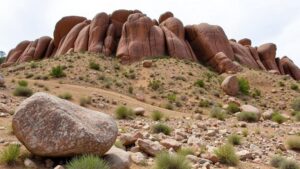Recognizing Indicators of Ancient River Channels for Gold Exploration
Recognizing Indicators of Ancient River Channels for Gold Exploration
Gold exploration has long been an endeavor for miners and geologists alike, as ancient river channels present ideal conditions for gold deposition. Understanding how to recognize the indicators of these channels can significantly enhance the success of exploration efforts. This article discusses key indicators, techniques for identification, and the influence of geomorphology in detecting ancient river channels.
Importance of Ancient River Channels in Gold Deposits
Ancient river channels often store substantial amounts of gold because of their historical role in sediment transport. Over geological time, rivers would erode gold-bearing rocks, transporting the mineral downstream. When river currents slowed–often during shifts in geological eras or climatic conditions–gold deposits would settle along the bed of these ancient channels.
According to a study by the U.S. Geological Survey, many significant gold deposits in North America, such as those found in the Sierra Nevada, originated from ancient river systems, underscoring their importance in modern exploration.
Key Indicators of Ancient River Channels
Recognizing the indicators of ancient river channels is crucial for successful gold exploration. Here are some common signs:
- Geomorphological Features: Look for distinct topographical features such as terraces, ridges, and alluvial fans that suggest ancient river paths.
- Stratigraphy: Investigating sediment layers can provide information about past river dynamics and sediment deposition patterns.
- Mineral Composition: Presence of specific minerals or sediments, such as gold flakes or fine-grained sands, may indicate proximity to former river systems.
- Remote Sensing Tools: Employing LiDAR or aerial imagery can help visualize underlying channel structures that are not visible to the naked eye.
Techniques for Identifying Ancient River Channels
There are several techniques geologists and miners use to identify ancient river channels, each providing valuable data for exploration:
- Geological Surveys: Comprehensive mapping of the area’s geology can reveal features typical of ancient river systems.
- Soil Sampling: Testing soil in identified areas can help determine the concentration of gold and accumulate knowledge about sediment history.
- Ground Penetrating Radar (GPR): This technology offers insights into subsurface structures without extensive excavation.
Case Studies: Successful Applications
Several case studies illustrate the effective recognition of ancient river channels leading to successful gold discoveries:
- The Klondike Gold Rush: Miners in the late 19th century leveraged their understanding of historical waterways to locate rich gold deposits in the Yukon Territory. The discovery was largely dependent on interpreting glacial geology and ancient river patterns.
- Australias Alluvial Gold Mining: In Australia, explorers have successfully used remote sensing and geological mapping in the search for ancient river channels, resulting in the discovery of substantial alluvial gold deposits, particularly in regions like Victoria.
The Role of Geomorphology in Gold Exploration
Geomorphology, the study of landforms and their formation, plays a critical role in gold exploration. Understanding how landforms evolve over time helps in the identification of ancient river channels. For example, river meander patterns can indicate where sediment has accumulated. Also, the morphology of ancient riverbeds can reveal where erosion has concentrated valuable materials.
Research shows that topography significantly influences sediment transport, leading to the deposition of heavy metals such as gold in the riverbed. Geomorphological mapping can, therefore, provide insights into the historical geography of gold-bearing regions.
Conclusion and Actionable Takeaways
In summary, recognizing indicators of ancient river channels is essential for effective gold exploration. By understanding the characteristics of these channels and utilizing modern technology, prospectors can significantly improve their chances of discovering gold deposits. Key actions include:
- Invest in advanced geomapping and remote sensing tools to visualize ancient channel structures.
- Conduct thorough geological surveys and soil sampling to acquire data on sediment composition.
- Use a geomorphological approach, taking into account landforms to predict potential gold deposition areas.
By following these guidelines, geologists and miners can harness the historical significance of ancient river channels for successful gold exploration.



